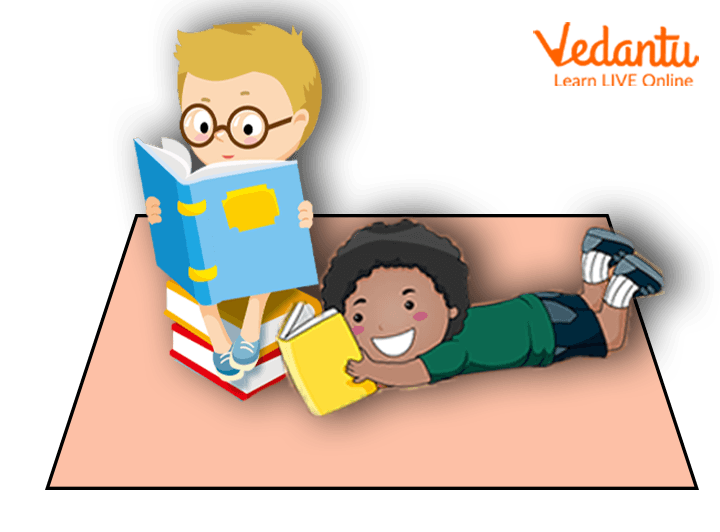




Why Early Reading Comprehension Matters for Young Learners
How to Motivate Kids for Reading in Year 5?
The children in class 5 will be required to read broadly. During this time, they are introduced to a wide range of literature and science. This helps kids to develop a deeper understanding. As a result, they are made aware of the variety of languages and writing styles in this way. They will discuss and investigate a wide range of texts, including short stories, non-fiction, poetry, and play scripts.
Parents can motivate their kids by telling them the importance of reading. Reading books not only helps in the expansion of a vocabulary but also helps in fueling the creativity in kids. Parents and guardians can help kids build reading abilities at home by doing a variety of basic tasks. The article discusses some of the ways which parents can refer to learn how their child will read at school and how one can assist them at home.

Kids Reading Book
Common Concepts Taught to Kids in Reading Year 5
Some of the common concepts that are introduced in the reading year 5 to kids include the following.
Understanding of Roots, Prefix and Suffix
The kids can use the basic knowledge of root words, prefixes, and suffixes to interpret the meaning of the phrase. They'll be able to see how prefixes and suffixes can change the meaning of words.
Introduction to a Wide Range of Literature and Comparison of Themes of Literature
By the fifth grade, students are introduced to an assortment of writing styles and themes in the literature. This means students can start comparing the books and work of literature they've read and made a comparative analysis of similarities and differences. The kids are also encouraged to sharpen their writing skills.
Recitation of Poetry and Essay
Learning to memorise a variety of poems and recitation of poems and play scripts aloud is one of the major tasks for kids in year 5. This enables children to practise reading aloud with expression while also demonstrating to the teacher that they comprehend the text.
Identification of Language Pattern, Structure and Meaning of the Text
As children near grade five the emphasis on reading shifts from just being able to read to consider the choices made by the author. Kids read a variety of texts and analyse how the words a writer chooses, the way the text is organised, and the way the words have been presented all work together to create a specific effect. This might be how one author makes a scenario amusing or how another author communicates information.
Debates and Group Discussion
Reading by year 5 students will develop to communicate knowledge in presentations and debates, as well as discuss what they read in groups and as a class. It's possible that they'll be encouraged to use notes to assist them.
How to Help Kids Develop Reading Habits?
Since we have seen some of the important concepts that are taught to kids in reading year 5, let us look into some of the ways that can help kids in developing reading habits.

Parent Reading a Bedtime Story
Reading Stories with Kids
It's tempting to encourage the kid to read on his or her own at this age. However, having a story read to children is still critical for their understanding to develop. Hearing a story read aloud allows your child access to literature that may be too difficult for them to read on their own. These difficult readings will aid in the development of their comprehension skills. Listening to an adult read is a good way to learn how to read fluently.
Reading a Variety of Books
Encourage your child to select texts in various formats and arrangements. Many youngsters have favourite authors and genres, but it's a good idea to branch out and try new things now and then – and don't forget about non-fiction texts like magazine articles, brochures, advertisements, newspaper columns, signs, and notifications. Even if your child can now read independently, reading to them can still be beneficial, especially if the books read are a little beyond their present reading level.
Storytelling with Picture Books and Illustrations
Picture books are a great way for younger children to practise their comprehension skills. This is also true for children as they become older and gain confidence as readers. Talking about what's going on in a picture, what the characters are thinking, and what can happen next can all help them improve their reading skills. One could use an illustration from a picture book, non-fiction book, comic strip, or photograph on its own. Many popular children's books use illustrations as part of the story.
Reading for a Purpose
Kids will most likely need to read for certain purposes in addition to reading for enjoyment. They'll read for information, to learn something new, or to find answers to questions. This can help you succeed in school if you practise it. Your youngster might be asked to research a topic or find solutions to class questions. One can aid their research abilities by discussing where to go for answers.
In conclusion of the article, reading not only is essential for the school curriculum but it also helps kids in their overall personality development. Children's interest in reading can begin to drop as they grow. Being a reading role model oneself is one approach to keep children reading. Showing them that you read a book or a magazine encourages children to think of reading as a worthwhile pastime. As the kid progresses through increasingly difficult books, he or she may experience difficulties and be hesitant to continue. Parents can assist them in getting through those stumbling blocks by reading a few pages with them to get them started or hooked on the following chapter. It is important to maintain a sense of empathy and respect for their decision — it has to be enjoyable!
FAQs on Fun Reading and Comprehension Activities for 5-Year-Olds
1. What are some fun reading activities to improve comprehension for a 5-year-old?
To make learning enjoyable, you can turn reading into a playful experience. Here are a few fun activities:
- Act It Out: Encourage your child to act out scenes from a story. This helps them understand characters' feelings and actions.
- Picture Talk: Before reading the words, talk about the pictures. Ask questions like, “What do you think is happening here?” This builds prediction skills.
- Ask 'Wh-' Questions: After reading a page or a short story, ask simple questions like “Who was in the story?”, “Where did it happen?”, and “What did they do?”.
- Storytelling with Puppets: Use puppets or toys to retell a story. This makes comprehension an interactive and creative task. For more ideas, explore these fun reading activities.
2. How can I introduce reading comprehension to a child who is just starting to read simple words?
When a child is just beginning to read, the focus should be on making connections, not testing them. Start with picture comprehension, where the story is told mainly through illustrations. Read simple, repetitive books aloud and pause to discuss what's happening in the pictures. Connect the story to your child's own life by asking, “Have you ever felt sad like this character?” The goal is to show that stories have meaning beyond the words on the page. Vedantu offers excellent resources on picture comprehension to get you started.
3. What are the common challenges parents face when teaching a 5-year-old to read?
Parents often encounter two types of young readers: hesitant readers, who are capable but unwilling to read, and struggling readers, who have difficulty remembering letter sounds or common words. Other common challenges include short attention spans and competition from digital screens. It is important to create a positive, low-pressure reading environment and consult with their teacher if you have concerns about their progress.
4. What is the difference between simply decoding words and true reading comprehension?
Decoding is the ability to sound out words, like reading “c-a-t” as “cat.” It is a mechanical skill. Reading comprehension, on the other hand, is the ability to understand the meaning behind those words. A child might be able to decode a sentence perfectly but have no idea what it means. True reading involves not just seeing words but also creating a mental picture, understanding emotions, and following a sequence of events. The ultimate goal of reading is always comprehension.
5. Why is a positive reading environment at home so important for a 5-year-old?
A positive environment turns reading from a chore into a treat. Forcing a child to read can create anxiety and make them dislike books. Instead, creating a cozy reading nook, letting them choose books that interest them, and setting an example by reading yourself shows that reading is a fun and valuable activity. This positive association is crucial for building a lifelong love for reading and learning. Discover more ways to make reading for kids fun and easy.
6. What are “The Big 5” of reading, and how do they apply to a 5-year-old?
“The Big 5” are the core components essential for learning to read effectively. For a 5-year-old, they are introduced through fun activities:
- Phonemic Awareness: The ability to hear and play with individual sounds in words (e.g., rhyming games).
- Phonics: Understanding the link between letters and sounds (e.g., 'A' says /a/).
- Fluency: Reading smoothly and with expression, which starts with reading familiar books over and over.
- Vocabulary: Learning the meaning of new words through conversation and being read to.
- Comprehension: Understanding the story, which is built by talking about the pictures and events.
At this age, the focus is mainly on phonemic awareness, phonics, and building vocabulary as a foundation for future reading success.
7. How does storytelling help improve a child's comprehension skills more than just reading a book aloud?
While reading aloud is excellent, storytelling is an interactive process that actively engages a child's imagination. When you tell a story, you can use different voices, add gestures, and pause to ask what they think will happen next. This dynamic approach helps a child visualise the plot, understand character motivations, and grasp the sequence of events more deeply than passively listening. It transforms them from a listener into a participant in the narrative, boosting their overall comprehension.















